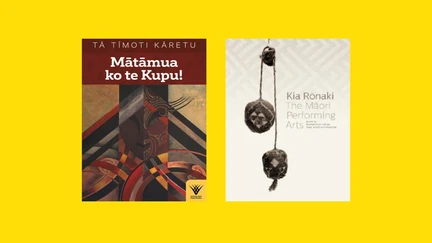Aotearoa Traditional Māori Performing Arts and Te Matatini – Part 3
Haere mai and welcome to the third blog in our ‘Te Whare Tapere to Kapa Haka and Māori Concert Party’ series.

You can find Part One, and Part Two.
The modern kapa haka competitions began around the time of the first Waitangi Day celebrations in 1934.
The Polynesian Festivals were held at Rotorua, 1972 and 1976. Regional teams took part, but also present were Pacific rōpū until 1983 when the festivals became the Aotearoa Traditional Māori Performing Arts Festival.
In 1976, rōpū representing Guam and Australia attended the festival. Guam had become an unincorporated territory of USA in August 1950, and its contribution to the festival revealed an almost complete annihilation of the indigenous culture. The rōpū’s waiata-ā-ringa including the shooting down of Japanese invader planes (30 years after the end of WWII), and the singing of the current USA pop song (in English) of ‘How much is that doggie in the window’.
The Aboriginal rōpū told their stories in dramatic role plays backed by their instruments such as didgeridoo — they didn’t stand in kapa / lines for their cultural performances at all.
The Aotearoa Traditional Māori Performing Arts Festival existed between 1983 and 2004.
Have watch of the Iwi Anthems television programme, which began screening on Māori Television in 2013:
Every iwi has an anthem, they are the waiata and haka we love to perform at gatherings. Our iwi anthems tell unique stories about our tribes revealing who we are and what’s important to us.
Iwi Anthems, on Māori Television
The competitions rotated from marae to marae setting, with tribal influences dominant in each iwi/hapū territory. The iwi anthems became signature tunes for the respective iwi, with perpetuation of dialect specific to their region. With the influence of migrations to urban centres in search of jobs and upskilling (by trade training, nursing, etc) there was a move to pan-tribal rōpū with pan-tribal influences for members, composers, tutors.
Watch a video from Te Ara of Kapa haka group Te Waka Huia performing the whakaeke (entrance) at the 1996 Aotearoa Traditional Māori Performing Arts Festival:
Te Rita Papesch has written an overview of those years in the book: The state of the Māori nation : twenty-first-century issues in Aotearoa, published in 2006:
- “Kapa Haka” — Chapter 2 in State of the Māori nation : twenty-first-century issues in Aotearoa
Te Matatini was formed in 2004, and the competition has now moved to a handful of centralised city settings – influenced by underlying economic factors such as the large size of the moveable stage, and the cost of hosting the competitions. But there has also, lately, been a return to the telling of tribal stories alongside themes of world-wide concerns.
Te Matatini performances have become dramatic, passionate, fluid, and topical in the stories they bring to the stage, but the staunch tutors and leaders of the kapa haka teams declare the centre of Kapa Haka lies, and must always lie, with the care and attention to the reo within these cultural performances, even where a regimented “correct” body poses of the past ideals are no longer of paramount importance.
Watch Hikurangi‘s Te Matatini performance in 2019. Here is the signature waiata of Ngāti Porou – where the rangi and costumes honour the legacy of Te Moana-nui-a-kiwa Ngarimu, but the actions, foot, arm, hip movements are vigorous, “lively” and far from “traditional”:
Aspiring to preserve the waiata, traditions and legacy of their kapa, Hikurangi is one of the longest-standing kapa in the country, having been established in 1934.
Te Ao Māori News
Further books from our shelves:
- Haka : te tohu o te whenua rangatira = the dance of a noble people / Kāretu, T. S. (1993)
- Mātāmua ko te kupu! : te haka tēnā! te wana, taku ihi e, pupuritia / Kāretu, T. S. (2020)
- Kia Rōnaki = The Māori performing arts
- Haka : a living tradition / Gardiner, Wira
- Chapter “Kapa Haka as a web of cultural meanings” by Hector Kaiwai, in Cultural studies in Aotearoa New Zealand : identity, space and place
Kapa haka mai rānō ki tēnei wā, has been important to iwi on several levels — as a driver of perfection in te reo, as a way of carrying through stories pūrākau and traditions of the past, and now, as a way of raising awareness of current local and global issues.
Kia kaha te reo Māori — mō āke tonu atu.
Read more: